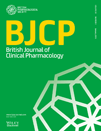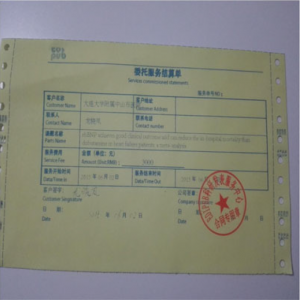The editors of a journal that recently retracted a paper after the peer-review process was “compromised” have published the fake reviews, along with additional details about the case.
In the editorial titled “Organised crime against the academic peer review system,” Adam Cohen and other editors at the British Journal of Clinical Pharmacology say they missed “several fairly obvious clues that should have set alarm bells ringing.” For instance, the glowing reviews from supposed high-profile researchers at Ivy League institutions were returned within a few days, were riddled with grammar problems, and the authors had no previous publications.
The case is one of many we’ve recently seen in which papers are pulled due to actions of a third party.
The paper was submitted on August 5, 2015. From the beginning, the timing was suspect, Cohen — the director for the Centre for Human Drug Research in The Netherlands — and his colleagues note:
Contrary to our normal practice, the Executive Editor decided to accept both suggestions (our policy is to use non more than one) and the two peer reviewers were invited. They accepted this invitation to review one day later. The reviewers’ comments were returned after two and four days, respectively…
Despite slipping its way through peer review and the editors at the journal — it was accepted on September 15, 2015, and posted online a few days later — the paper came under scrutiny at a journal club session at an academic institution. Smita Pattanaik, an associate professor in pharmacology at the Postgraduate Institute of Medical Education and Research in Chandigarh, Punjab, India, who co-authored the editorial, and was the faculty moderator of the session, wrote a “highly critical” letter about the paper, which is included with the editorial. This letter “raised some eyebrows” in the editorial board, the editors note:
It appeared that the flaws in the metaanalysis were even worse than presented in the letter.
For example:
The number of extracted events per study was a mix of real events and the number of patients without an event. We were not able to locate two Chinese studies used for the meta-analysis. The scoring system “Critical Appraisal Skills Programme” used to score the quality of the studies has, as far as we know, never been used before and consists of completely irrelevant questions such as “What are the results of this study?”, “What are the implications of this study for practice?”, and “Do you believe the results”?.
The editorial includes the fake reviewer’s comments about the paper. Here is one review:
As the authors documented that this meta-analysis based on a systematic review of existing studies evaluated the efficacy of rhBNP and dobutamine treatments in the clinical management of HF patients, no matter from the title singly or from the well-constructed abstract, the pre-set idea was well proved, not to mention the wonderful major text. In my opinion, authors provided a clear background introduction (HF, rhBNP and dobutamine) to draw out a legitimate research; and I am especially interested in the illustration of the Discussion,which illuminate the hypothesis from the Introduction entirely. Good job!’ ‘Only one concern, in order to perfect this paper, the statistical data “P” was rarely expressed as “0.000”, please revise this minor question in the Results.
And here are the second reviewer’s comments:
I am very interested in this article titled “Recombinant human brain natriuretic peptide achieves to reduce the in-hospital mortality than dobutamine in heart failure patients: a metaanalysis”, from such concise and clear title readers might also be attracted from this topic, where the authors elaborated the important role of rhBNP in decreasing the in-hospital mortality than dobutamine in heart failure patients. The work could be of potential interest for the readership of British journal of clinical pharmacology. The manuscript was properly organized, with rich contents and reasonable methods.
1 Introduction: the part about heart failure introduction as well as the treatment choice regarding rhBNP and dobutamine is partinent.
2 Methods and Results sections are adequately described.
3 In discussion, obtained results was discussed elaborated (very few studies were cited, yet not properly discussed) and further confirmed with similar studies.
4 No comments on tables and Graphics.’
‘I do appreciate the authors effort on this paper after perusing the article, hence I recommended a publication of this article in British journal of clinical pharmacology.’
According to the editors, the editorial board had “overlooked all danger signs.” The authors were “very inexperienced” in science, and none of them had previously published a paper:
Of course, all authors have to start their careers as inexperienced, but normally a group of authors has at least one member with more experience.
The authors had suggested “two highly ranked professors of medicine in Ivy League US universities,” but didn’t provide their institutional email addresses:
…the fact that they did not have an institutional e-mail address should have raised suspicion.
We wrote to the referees and one of them denied all knowledge of this report. The second referee could not be traced.
The journal then reached out to the authors who claimed that a third party, a Chinese company knows as EditPub, was involved with the submission process of the manuscript. The authors revealed that they had paid 3000 RMB (around $460 USD) to the company. Here is the payment slip:
Regarding EditPub, Cohen et al write:
We checked several and found that often their photographs and emails were fabricated. Readers can check for themselves, but it is hardly conceivable that a Brazilian female researcher has the picture of Henry Kissinger by accident.
We’ve previously reached out to EditPub who told us they are unable to comment because they are in “holiday mode.” Our co-founders have also written a column for STAT about the case.
Finally, the journal reported the case to the Chinese Ministry of Science and Technology (MOST) and requested them to investigate further.
Cohen and colleagues conclude:
So for the foreseeable future, BJCP will not ask for your fingerprints or your ID card or X ray your data, even though we understand very well that there are bandits out there, and this Editorial serves as another warning for our colleagues.
The case was especially “worrying,” the editorial notes, because it suggested rat brain natriuretic peptide (rBNP) was effective in heart failure, which contradicted the established understanding about the compound.
The retracted paper, “rhBNP therapy can improve clinical outcomes and reduce in-hospital mortality compared with dobutamine in heart failure patients: a meta-analysis,” has not yet been cited, according to Thomson Reuters Web of Science. The editors note it has only been downloaded 113 times since being published, and put that into context:
A sample of 14 papers published around the same time were downloaded on average about 3 to 4 times more often, indicating that the paper had not attracted a lot of attention.
When we reported on the retraction last month, Xiao-Feng Long, last author of the paper from Dalian University in China, told us:
Of course, we firmly believe…the authenticity of our academic results, the reason for our loss of the publishing opportunity might be closely correlated with the ability of our lacking of adequate academic study ability, rather than the so-called academic fraud. We therefore make up our mind not to give up our research and try our best to improve our academic research ability.
We’ve contacted MOST and Long for further clarifications on this case, and will update the post with anything else we learn. We’ve also reached out to Cohen to ask for more details about the researchers who were impersonated during the review process.
In total, that’s more than 300 papers retracted for faked or rigged peer review. Here’s our 2014 Nature feature about the issue if you need a bit more background.
Like Retraction Watch? Consider making a tax-deductible contribution to support our growth. You can also follow us on Twitter, like us on Facebook, add us to your RSS reader, sign up on our homepage for an email every time there’s a new post, or subscribe to our new daily digest. Click here to review our Comments Policy. For a sneak peek at what we’re working on, click here.


The photo of the Brazilian female had been changed to Martin Scorsese this morning.
Scorcese, Kissinger, tomayto, tomahto.
I think it was Scorcese all along, Kissinger’s picture is used for another of their supposed reviewers (Boris Malyarchuk).
Perhaps “EditPub” are masters of face transplantation, as well as manuscript editing?
I am disappointed that the editorial does not explicitly blame the responsible Editors for accepting such uninformative “peer-reviews”. Of course the scamming entity is the most to blame, but Editors are not supposed to “rubber-stamp” peer-reviewer reports, but to evaluate them critically before making a decision. I am left wondering how careful the editing at BJCP usually is, and whether the (ir)responsible Editors will change their apparent rubber-stamping m.o. 🙁
An aside: In the above picture, the payment slip to Editpub has an official “chop” (the circle with the red star.) In China, this means the transaction was official and recorded for tax and other purposes. A few years ago, as a way to get restaurants to pay the appropriate taxes, if you asked for an official receipt, it had a scratch off part where you might get some money back (like a lottery ticket).
I give this explanation because it’s ironic that a company would be hired to write fake peer reviews, yet be paid in a way that ensures they pay their taxes.
What is astonishing to me (as a native/fluent English speaker) is that the quality of the fake review letters was so poor– in grammar, spelling, and just plain meaning– and yet they were accepted as authentic. Some of the text was risible. I agree with PedroS, the editors were partly to blame for this. Three thousand renmimbi doesn’t buy much.
I wonder if the authors can sue this company. They have an official receipt and this should be possible. About the amount, if I am correct, it equals about 500 USD. It is actually a quite considerable amount in China.
It would be instructive to have an accurate translation of EditPub’s pages, so that we would know what services the authors thought they were paying for.
Given the actual amount of text, 3000 CNY is also awfully steep. I’m not sure what percentage I receive from the (eminently reputable) Asia-based editing service that I freelance for, but an educated guess based on a different firm would be in the 30%–40% range, and that’s just plain not a 1000 CNY job.
Where do I sign up for this kind of work?
from the well-constructed abstract, the pre-set idea was well proved, not to mention the wonderful major text.
Embarassingly sycophantic and written as if pumped through Google Translate and back. I hope the editors have gone back to re-read reviewers’ comments from past publications, looking for this distinctive style.
That’s a thought. Google Translate does have a distinctive “voice” and you should be able to recognize it when translated from, say, Mandarin. Wish I had taken Chinese course when I had a chance… I’d still be studying.
On the ‘EditPub’ website you can scroll through their reviewers/consultants etc
Two different US based folk are included
Each is the primary author of one of the studies cited in the meta-analysis – and each (possibly) one of those falsely attributed to the PR process. (No Names but see)
http://www.editpub.net/index.php?id=45
http://www.editpub.net/index.php?id=46
..IN direct follow-up to above
It seems clear to me that these individuals are ENIRELY UNAWARE